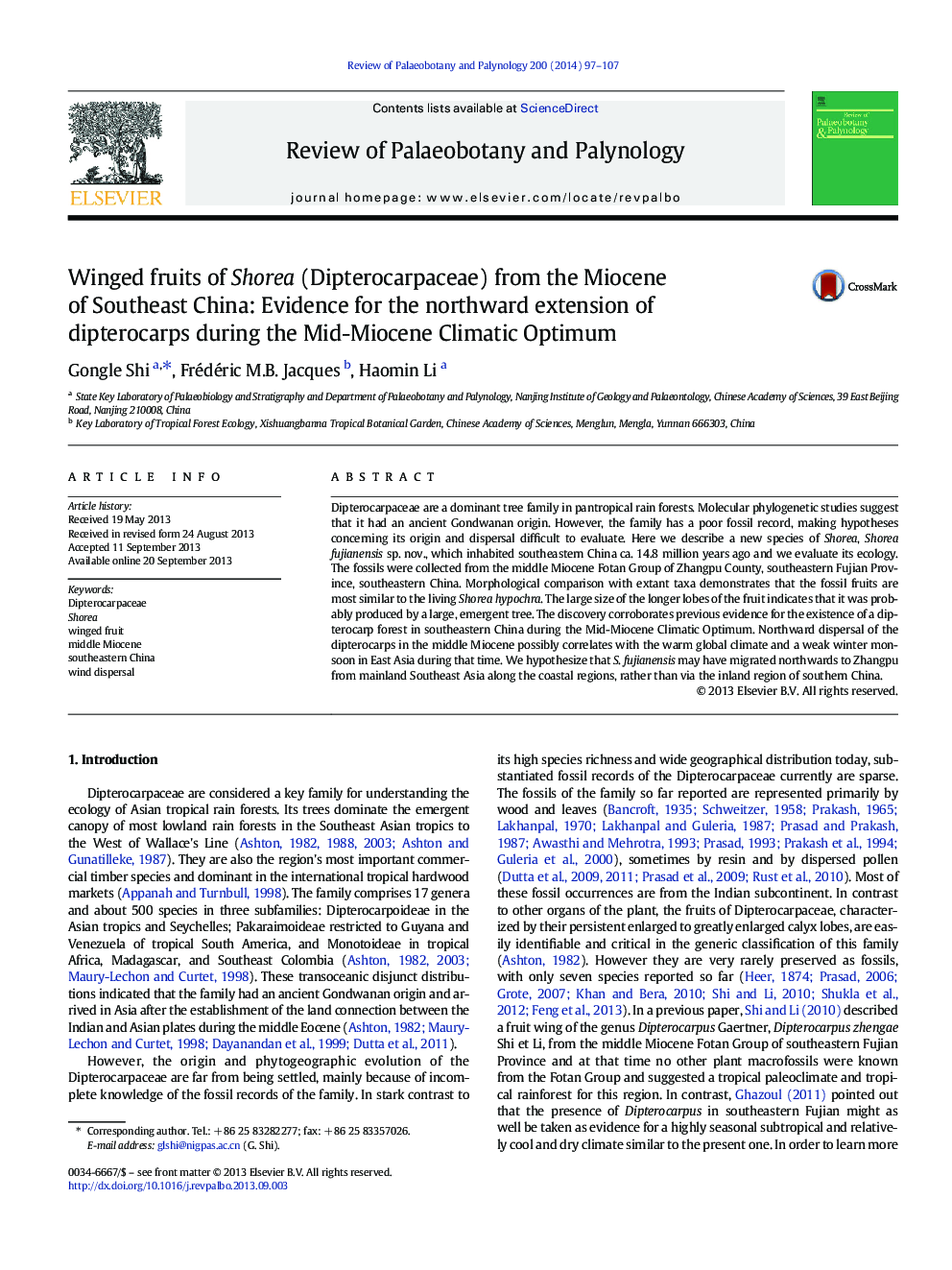| کد مقاله | کد نشریه | سال انتشار | مقاله انگلیسی | نسخه تمام متن |
|---|---|---|---|---|
| 6448775 | 1642498 | 2014 | 11 صفحه PDF | دانلود رایگان |

- Dipterocarpaceae are a dominant tree family in SE Asian tropical rain forests.
- Winged fruits of Shorea are described from the Mid-Miocene of Southeast China.
- This discovery indicates the northward dispersal of the dipterocarps in Mid-Miocene.
- Shorea fujianensis sp. nov. might migrate to Zhangpu from mainland SE Asia along the coast.
Dipterocarpaceae are a dominant tree family in pantropical rain forests. Molecular phylogenetic studies suggest that it had an ancient Gondwanan origin. However, the family has a poor fossil record, making hypotheses concerning its origin and dispersal difficult to evaluate. Here we describe a new species of Shorea, Shorea fujianensis sp. nov., which inhabited southeastern China ca. 14.8 million years ago and we evaluate its ecology. The fossils were collected from the middle Miocene Fotan Group of Zhangpu County, southeastern Fujian Province, southeastern China. Morphological comparison with extant taxa demonstrates that the fossil fruits are most similar to the living Shorea hypochra. The large size of the longer lobes of the fruit indicates that it was probably produced by a large, emergent tree. The discovery corroborates previous evidence for the existence of a dipterocarp forest in southeastern China during the Mid-Miocene Climatic Optimum. Northward dispersal of the dipterocarps in the middle Miocene possibly correlates with the warm global climate and a weak winter monsoon in East Asia during that time. We hypothesize that S. fujianensis may have migrated northwards to Zhangpu from mainland Southeast Asia along the coastal regions, rather than via the inland region of southern China.
Journal: Review of Palaeobotany and Palynology - Volume 200, January 2014, Pages 97-107